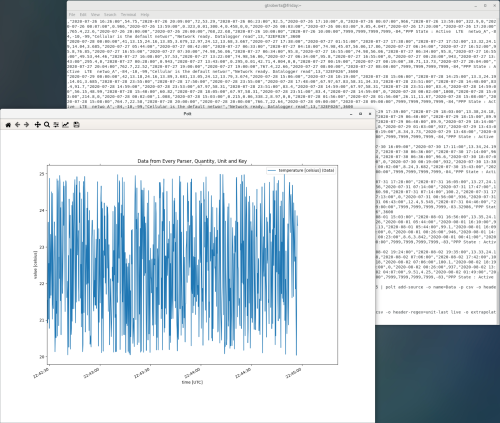






Overview
Current Version: 4.7
LoggerNet Linux provides a solution for those who want to run the LoggerNet server in a Linux environment. The package includes a Linux version of the LoggerNet server. A Windows version of LoggerNet Remote is required. The Windows-based client applications in LoggerNet Remote are run on a separate computer, and they are used to manage the LoggerNet Linux server.
A copy of the current software license for use agreement for LoggerNet Linux is available in the LoggerNet for Linux Instruction Manual.
Read MoreBenefits and Features
- Capable of running a LoggerNet server in a Linux environment
- Includes all LoggerNet functions
- Provides user- and group-level security for data loggers and data access
- Can be managed from a remote Windows PC using LoggerNet Remote
- Runs as a daemon (Linux equivalent to a Windows service)
- Exports data to third-party applications using command-line tools (CoraScript) or LoggerNet Remote
- Can be accessed by multiple LoggerNet Remote client connections and users at the same time
- Capable of setting up subnets of the network map
- Includes many of the functions of LoggerNet Admin but without a user interface; UI provided by LoggerNet Remote
Images

Technical Description
LoggerNet Linux provides a solution for those who want to run the LoggerNet server in a Linux environment. The package includes a Linux version of the LoggerNet server and a Windows version of LoggerNet Remote. The Microsoft Windows-based client applications in LoggerNet Remote are run on a separate computer, and are used to manage the LoggerNet Linux server.
Compatibility
Computer
The disk with the LoggerNet Linux Server contains a Debian distribution and a Red Hat RPM distribution. Each distribution includes a 64-bit version.
LoggerNet Remote is required for use with LoggerNet Linux. The LoggerNet Remote clients used to manage the LoggerNet Linux server run on an Intel-based computer with a Microsoft Windows operating system. The LoggerNet Remote clients run on Windows 10 and 11.
Communications
The LoggerNet server provides communications with the data loggers over various mediums including serial ports, TCP/IP connections, and Linux compatible phone modems.
Specifications
| Current Version | 4.7 |
| Operating System | Windows 11, 10, 8, or 7 (for LoggerNet Remote) |
| RPM Distribution | Red Hat (64 bit) |
| Debian Distribution | 64 bit |
Related Documents
Related FAQs
Number of FAQs related to LNLINUX: 4
Expand AllCollapse All
-
Follow these steps:
- On the Windows computer, open the LoggerNet Setup screen.
- In the Backup menu, select the Manual Backup option to create a backup of the network.
- On the same or different Windows computer, use the LoggerNet Remote software that was included with LoggerNet for Linux to connect the Setup screen to the LoggerNet for Linux server (File | Select Server).
- Restore the network backup (Backup | Restore Network).
- Review the restored settings in the Setup screen. Some settings (such as COM ports, modems, data file paths, etc.) may need to be adjusted.
-
LoggerNet for Linux should run on most distributions with base distributions of Red Hat, SUSE, or Debian.
-
Yes. LoggerNet for Linux (LNLinux) allows the LoggerNet server to be run on a Linux computer. The LoggerNet server collects and stores the data, while setup and management of the network are easily handled from a Windows computer running LoggerNet Remote or, rather tediously, using Cora Command on the Linux computer.
-
The blog article "How to Navigate the World of Software Upgrades, Patches, and Trials" explains the difference between patches (free of charge) and upgrades (for a fee). This example quickly shows the difference between an upgrade and a patch:
Upgrade Patch Major version change, such as 1.3 to 2.0
Minor version change, such as 1.3 to 1.4
Typically requires purchase for a fee
Free of charge
Case Studies
Horseshoe Irrigation is a small, rural irrigation company in central Utah, managing around 15,000 water......read more
Lightning strikes are a serious concern for school officials who are responsible for protecting the......read more



